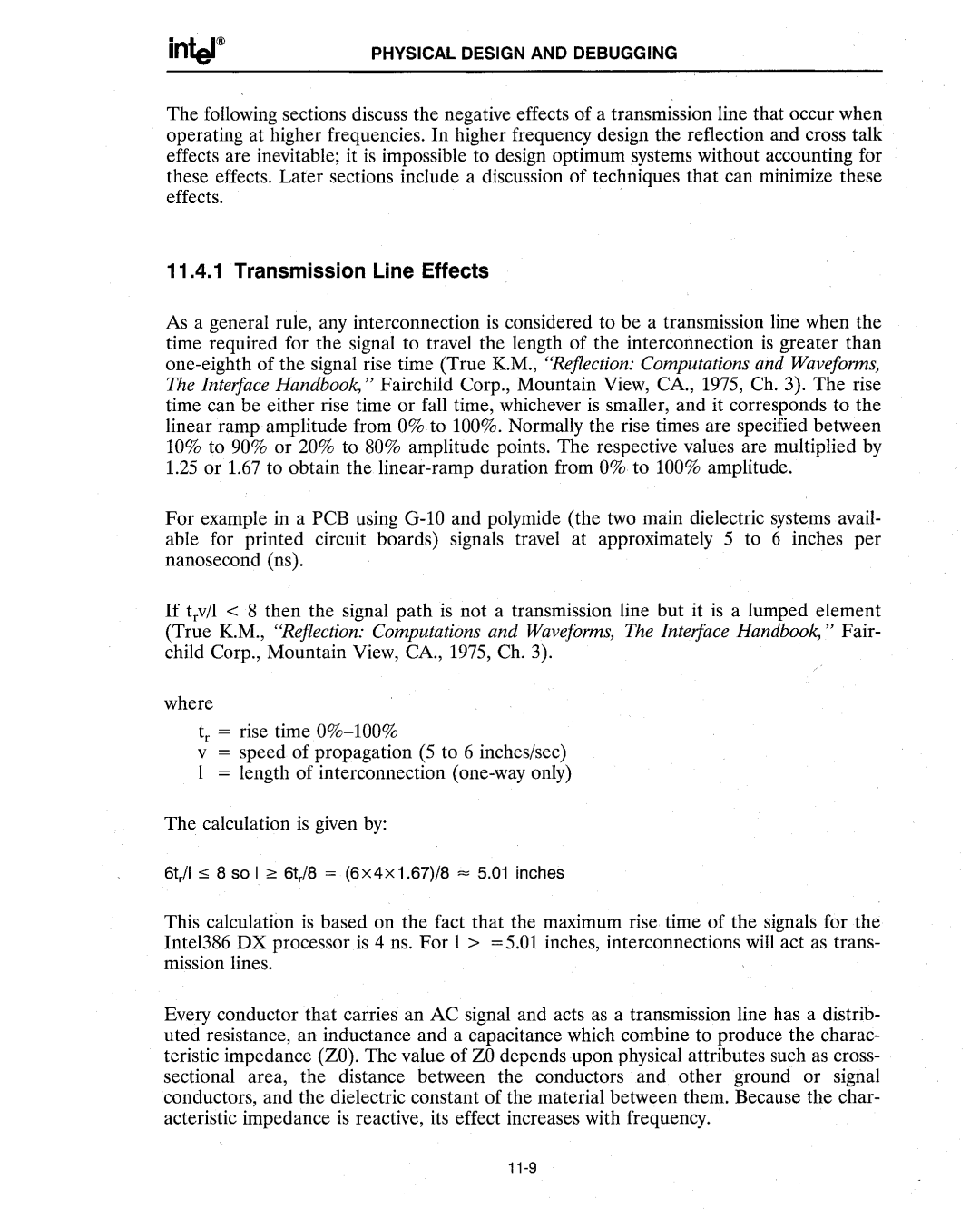
PHYSICAL DESIGN AND DEBUGGING
The following sections discuss the negative effects of a transmission line that occur when operating at higher frequencies. In higher frequency design the reflection and cross talk effects are inevitable; it is impossible to design optimum systems without accounting for these effects. Later sections include a discussion of techniques that can minimize these
effects. | . |
11.4.1 Transmission Line Effects
As a general rule, any interconnection is considered to be a transmission line when the time required for the signal to travel the length of the interconnection is greater than
For example in a PCB using
If trv/l < 8 then the signal path is not a transmission line but it is a lumped element (True K.M., "Reflection: Computations and Waveforms, The Interface Handbook," Fair- child Corp., Mountain View, CA., 1975, Ch. 3).
where
tr = rise time
v= speed of propagation (5 to 6 inches/sec) I = length of interconnection
The calculation is given by:
6t,/1 ::;; 8 so I ~ 6trl8 = (6x4X 1.67)/8 = 5.01 inches
This calculation is based on the fact that the maximum rise time of the signals for the Intel386 DX processor is 4 ns. For I > =5.01 inches, interconnections will act as trans- mission lines.
Every conductor that carries an AC signal and acts as a transmission line has a distrib- uted resistance, an inductance and a capacitance which combine to produce the charac- teristic impedance (ZO). The value of ZO depends upon physical attributes such as cross- sectional area, the distance between the conductors and other ground or signal conductors, and the dielectric constant of the material between them. Because the char- acteristic impedance is reactive, its effect increases with frequency.
